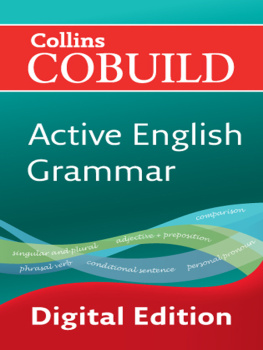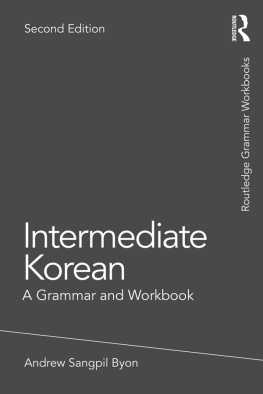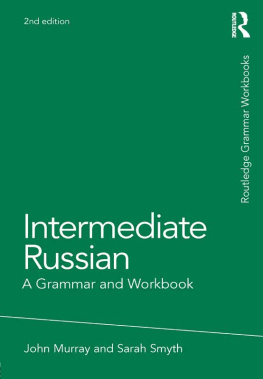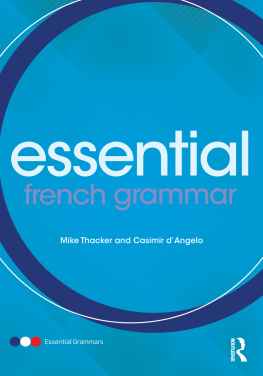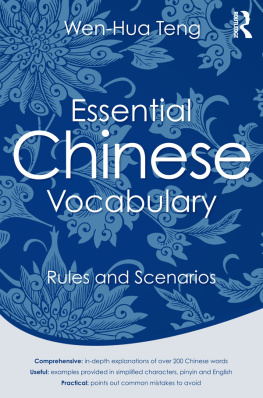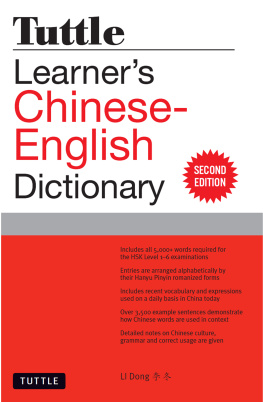AllSet Learning
The Chinese Grammar Wiki
BOOK:
Upper Intermediate (B2)
Editor-in-Chief John Pasden
Foreword by Dr. David Moser
SHANGHAI
Published by AllSet Learning, Shanghai, China.
For information about educational or bulk purchases, please contact AllSet Learning at sales@allsetlearning.com.
1st print edition, 2021.
Print book ISBN: 978-1-941875-65-0
Ebook ISBN: 978-1-941875-66-7
The Chinese Grammar Wiki is a trademark of AllSet Learning.
Copyright AllSet Learning, 2011-2021. The Chinese Grammar Wiki BOOK series evolved from the online version at http://resources.allsetlearning.com/chinese/grammar/.
All rights reserved; no part of this work may be reproduced, stored in a retrieval system, transmitted in any form, or by any means, electronic, mechanical, photocopying, recording, or otherwise, without the prior written permission of the publishers.
Foreword
Learning Chinese used to be a frustratingly front-loaded endeavor. One had to first learn pinyin, the four tones, how to write thousands of characters with the correct stroke order, how to use the 214 radicals to look up unfamiliar characters in a dictionary, and, of course, how to limn the mysterious principles of Chinese grammar. This process entailed inordinate sacrifices of eyesight, friends, and years of precious life spent learning to learn Chinese, before the hapless student could be weaned from a diet of pre-digested pabulum and delve into the messy, glorious world of real texts.
The Chinese Grammar Wiki is on the cutting edge of a growing arsenal of digital and web resources that have made this front-loaded Sisyphean nightmare a thing of the past. This very cool tool, developed by John Pasden and the folks at AllSet Learning, is in accordance with the new learning grammar as you go principle of Chinese study in the digital age. Learners can now boldly embark on the ocean of Chinese very early on, with navigational tools like the Grammar Wiki to reduce the risk of getting lost at sea. For the intrepid, motivated learner, studying Chinese can now be an adventure, instead of a five-year stint in solitary confinement. And from the very outset, students can begin to move toward the goal that was formerly so elusive: the acquisition of (ygn), the feeling for the language.
In my opinion, the Chinese Grammar Wiki has at least three very strong characteristics:
Modularity. This is a long-standing commonsense feature of website design, but its absolutely crucial for a grammar tool like this. The Wiki has conveniently carved up Chinese grammar into useful modular chunks with the beginner in mind, so that searching for a structure or topic is intuitive, quick, and yields a clear explanation that enables the user to forge ahead, enlightened and empowered. The structure and site map is user-friendly at every level, which means that the Wiki can be easily plugged in to existing Chinese syllabi, or simply employed by the student independently to explore texts and materials outside of class.
Interlinking. The Wiki is structured so that alongside the grammar points on most pages there are helpful links to related or similar grammar points within the Wiki. For example, in exploring the grammatical points for (b) involving comparison, you will find explanations of the basic (b) structure, examples, and common errors, but in addition you will also see links to other comparison structures using (miyu). This interlinking feature gives the user a fuller picture of various grammatical structures that serve similar functions in the language.
Universality. One of the strongest points of the Chinese Grammar Wiki is that the grammatical explanations have been tailored so as to contain the right amount of information, at the right level of specificity and complexity for the majority of learners. Designing a grammar resource with such wide applicability is not an easy task, requiring not only technical know-how and careful thinking, but also a strong intuitive sense of what the average student needs to know. Linguist Edward Sapir said all grammars leak, and this mutable, watery quality of language means that no grammatical framework is going to contain only tidy, airtight rules that cover every situation. In explanations, there is always a tradeoff between succinct simplicity and the real-life complexity, and the Wiki does an admirable job of striking a satisfying balance between these two yin-yang poles.
Being digital in nature, the Chinese Grammar Wiki is very much a work in progress, and the designers always welcome input and suggestions. Product development is always an interactive process, and the more people use the resource, the more useful it will become. I encourage Chinese students at all levels and even Chinese teachers to check it out and discover what the reference tools of the 21st century will look like.
No matter what well-meaning pedagogical Pollyannas might tell you, Chinese is still damn hard. Thankfully, there now are digital resources like the Chinese Grammar Wiki, which goes a long way to making the struggle easier.
David Moser
Academic Director, CET Beijing Chinese Studies
Beijing Capital Normal University
Introduction-B2
The Chinese Grammar Wiki began life as an Excel spreadsheet full of grammar points organized by difficulty level. This list was needed to track the progress of AllSet Learning's clients and to design personalized grammar practice where it was most needed. But as the lists continued to grow and evolve, it quickly became apparent that it made sense to put the grammar points online, so that the newest version would always be front and center. For ease of editing, what could be better than a wiki? And if AllSet Learning teachers were to have access, why not open up access to all learners ? The Chinese Grammar Wiki was developed internally for about a year before becoming public in January of 2012. Since then, it has grown tremendously, both in content and in traffic.
Probably the most important feature of the Chinese Grammar Wiki, which has always been kept at the forefront of its development, is its focus on learner level. An absolute beginner can't absorb a multitude of uses for every grammar point she encounters, and she shouldn't be expected to. And she certainly shouldn't be given frustratingly difficult example sentences when trying to grasp the most basic grammar concepts. That's why example sentences on the Chinese Grammar Wiki are plentiful, but relentlessly edited to be level-appropriate. And for the learners that can't get enough, relevant articles of all levels are always just a link away. Although the wiki aims to be 100% comprehensive, it's no coincidence that there are fewer A1 grammar points than A2 grammar points, and fewer A2 grammar points than B1 grammar points. At the B2 level, there's a risk of adding too many grammar points ; not every adverb in the dictionary really needs its own grammar point. Considerable thought and care has gone into curating and pruning the lists of grammar points.
Even so, there were a few too many B2 grammar points to fit in a 400-page tome. We have compiled a list of the "runners-up" on our "B2 book omissions" page on the Chinese Grammar Wiki.
The Chinese Grammar Wiki is not a Chinese course. Rather, it is a companion resource that can complement any Chinese class. Don't expect to read it from start to finish, or to go through the grammar point lists from top to bottom. But do expect to come back often. And expect to get sucked into the curiously logical world of Chinese grammar.


